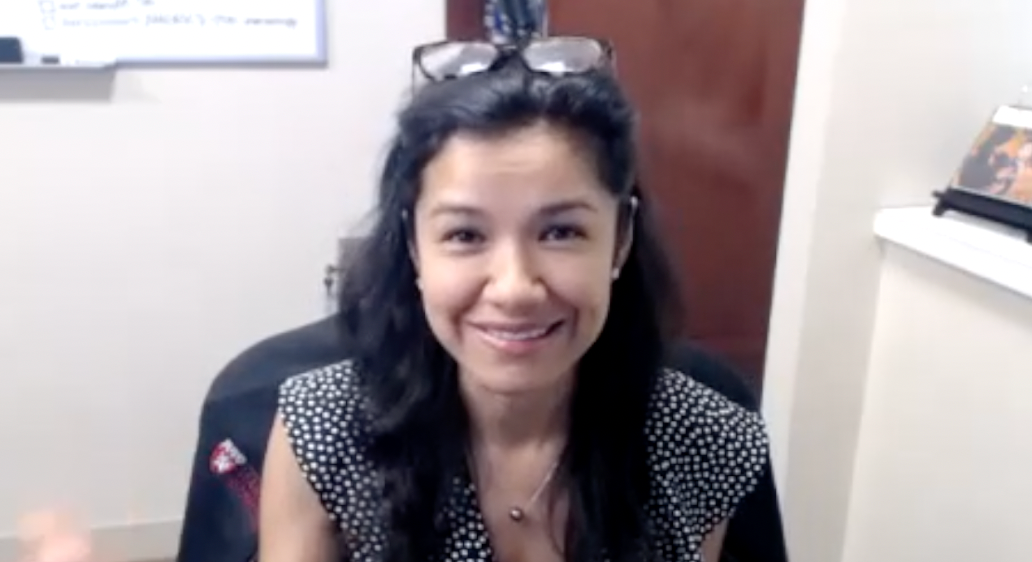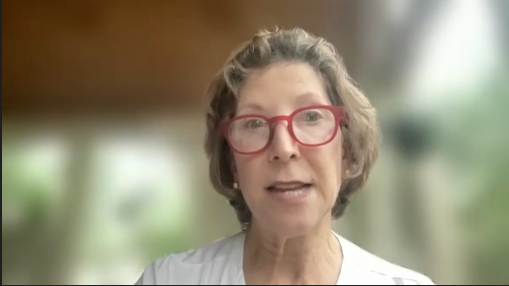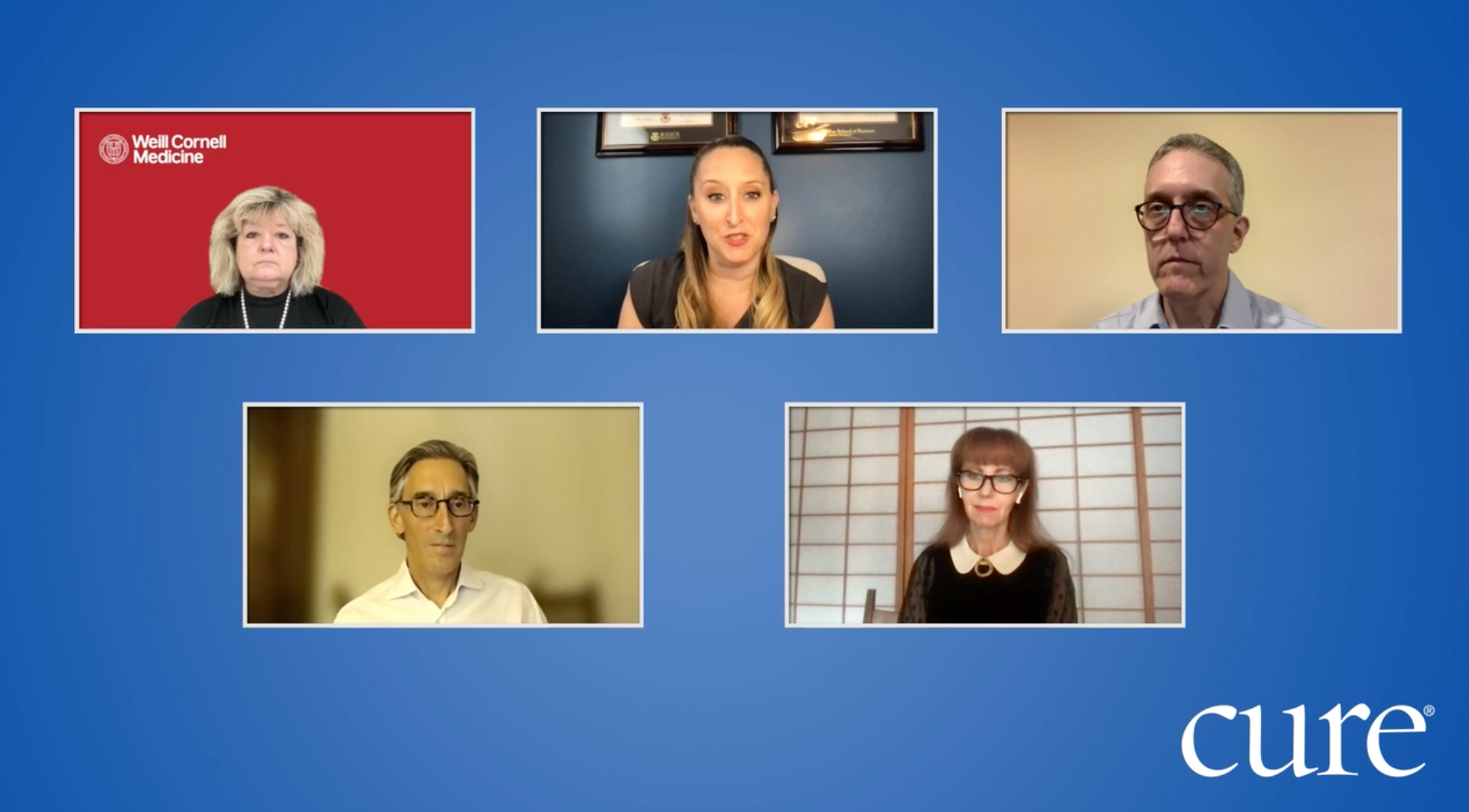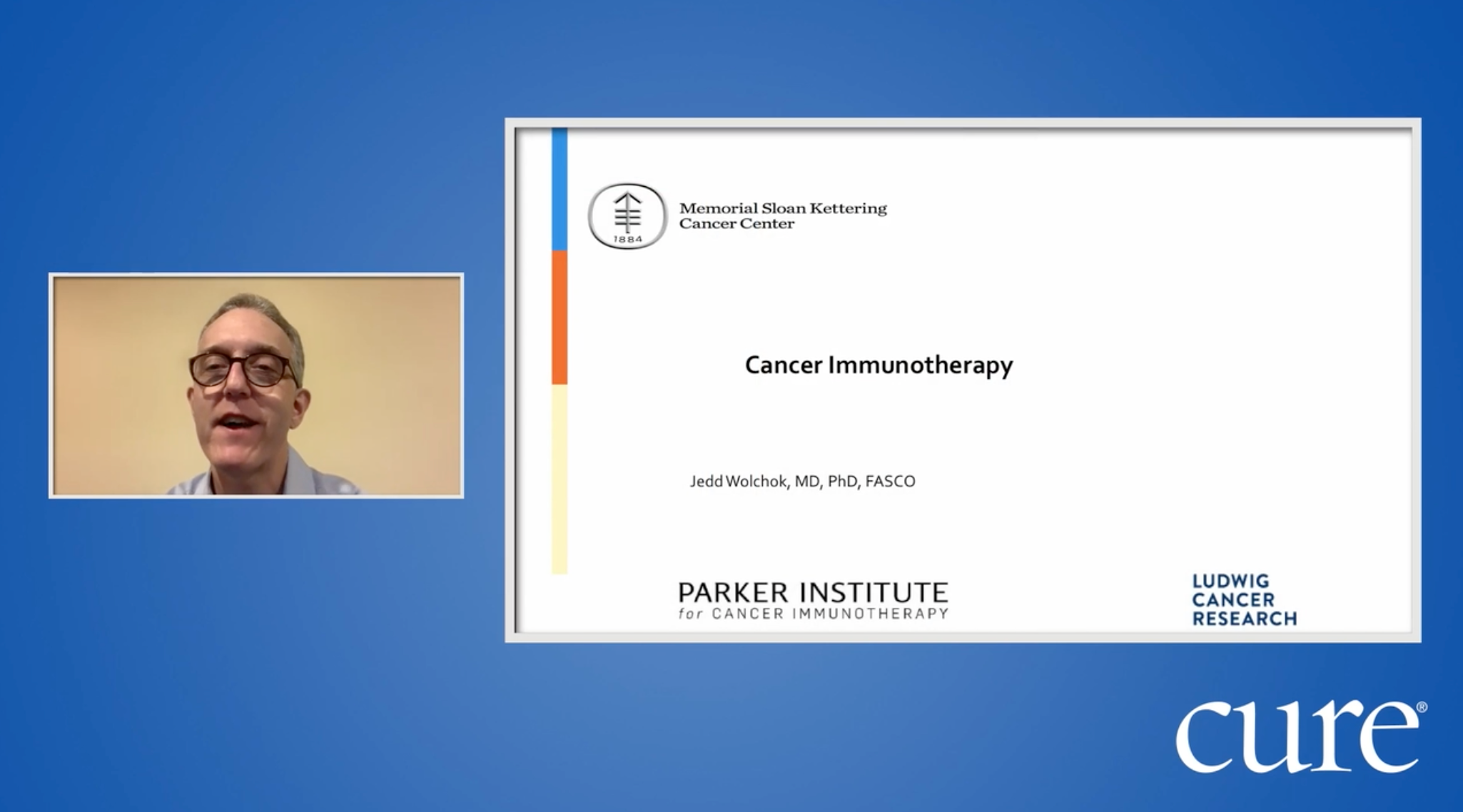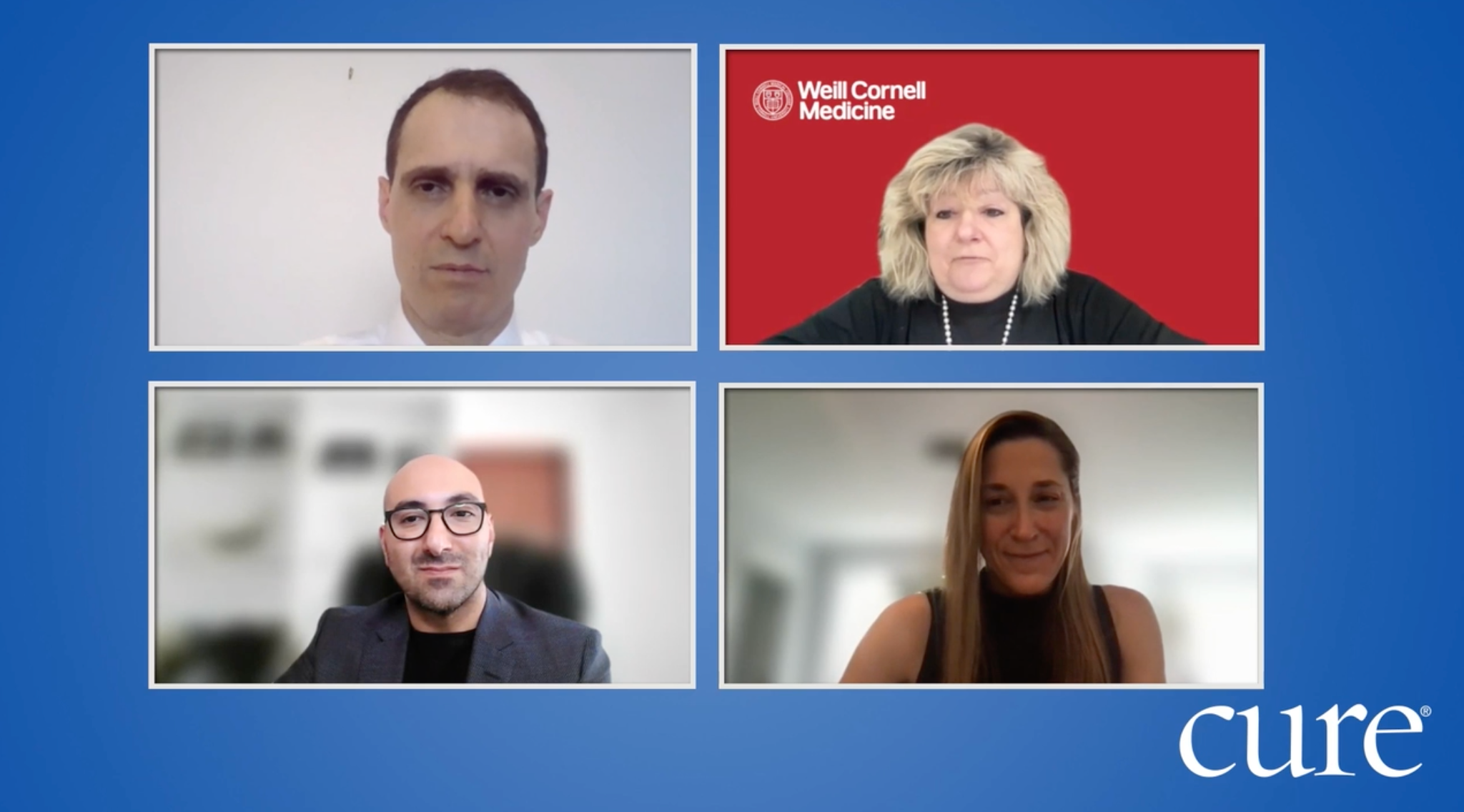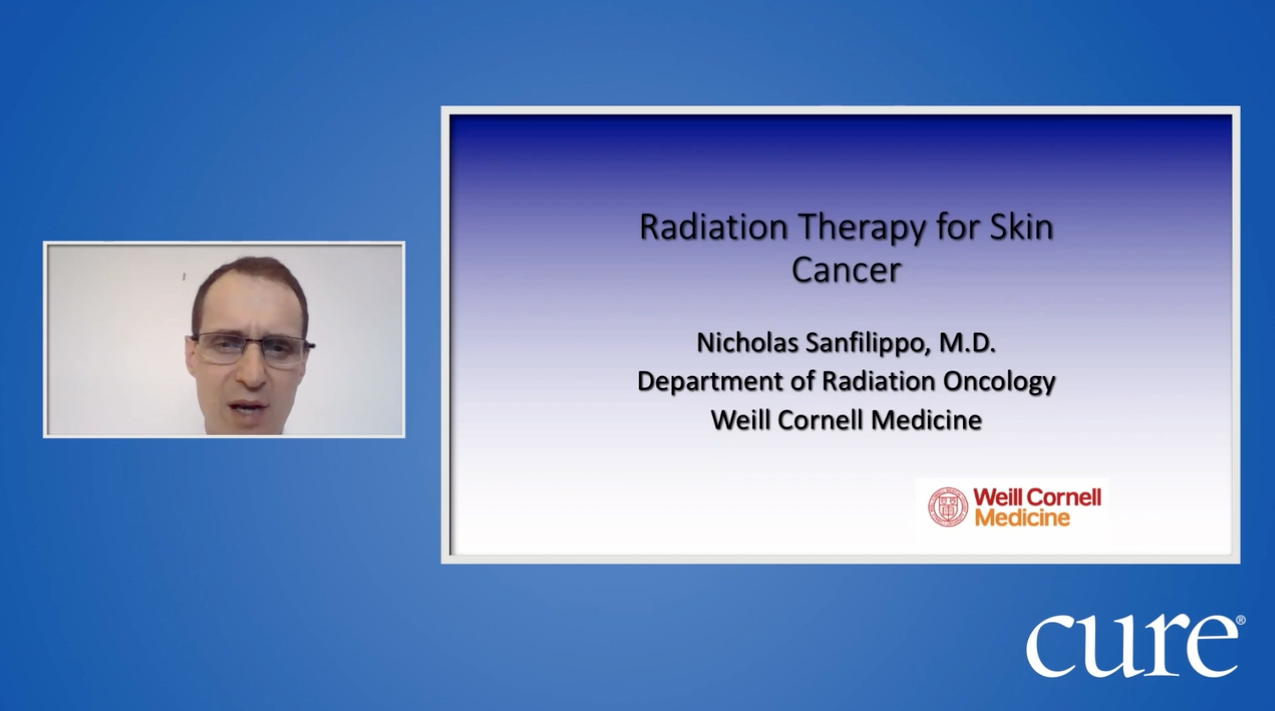Video
Anti-PD1 Therapy and CSCC
Transcript: Anna C. Pavlick, DO: When we talk about immunotherapy, a lot of times patients will always say to me, “What exactly are you talking about? Are you going to take cells from my body and give them back to me?” So how do you frame it for your patients to explain the mechanism for how anti-PD1 [programmed death-1] therapy in squamous cell carcinoma works?
Anthony Rossi, MD, FAAD: It’s an interesting concept that they’re not always ready to fully understand, but it’s something that piques their interest. I tell them there is a reason why immunotherapy has been tried for a squamous cell carcinoma because it’s a type of skin cancer that has a high mutation burden. There are many mutations found in these cutaneous squamous cell carcinomas, and because of that we can harness the power of the immune system to try to recognize it as foreign and then attack it.
Mainly the squamous cell carcinoma acts through this PD-1 pathway to actually evade the immune system and to hide from it, but by using these types of immunotherapies, these PD-1 inhibitors, we can stop that evasion and get the immune system to hopefully recognize that skin cancer and destroy it.
Anna C. Pavlick, DO: Yeah, especially now in the COVID-19 [coronavirus disease 2019] age, where everybody is home watching TV, I think every patient has seen Independence Day.
Anthony Rossi, MD, FAAD: True.
Anna C. Pavlick, DO: I liken it to the 1996 movie Independence Day, where the squamous cell cancer is the alien ship, and it’s got its protective force field around it, and our T cells are really those fighter jets trying to attack it. Until we give them PD-1 and figure out how to break through that force field, I liken the PD-1 to putting holes in the force field, so our T cells can get through and kill that mother ship. Everybody says, “Wow, that really makes a whole lot of sense,” because everybody has seen that movie. That’s something I like to share with my patients because it helps them better understand the mechanism on a more simplistic manner, so they can go home and share that with their families.
Anthony Rossi, MD, FAAD: I like that analogy. I might use it.
Anna C. Pavlick, DO: In treating patients with anti-PD-1 therapy, namely cemiplimab, based on an every-three-week schedule, do you have issues with your patients keeping on that track, staying on schedule because of toxicity? When do you start to look for response, and when would you say, “Yeah, I don’t think this is helping.” When do you expect to see a clinical response once you start immunotherapy?”
Anthony Rossi, MD, FAAD: I would actually put this question back to you. I usually partner with my medical oncologist, so we work in tandem. The medical oncologist is prescribing the medication, and we’re also seeing the patient in tandem—not to overburden them with visits but to make sure that we’re seeing a clinical response and that we’re not seeing anything new pop up in the area as well, like any new skin lesions. But we rely on our medical oncologists to help us with this. We can definitely provide a more clinical response to see how the tumor is shrinking, but I would ask you that question: how do you see them?
Anna C. Pavlick, DO: Yeah, we tried to do the same, working in conjunction with my dermatologist, who also becomes very helpful to me as well if the patients were to get any cemiplimab-induced rashes, so everybody is on the same page. I think patients do exceedingly well and don’t deal with a whole lot of toxicity, so they’re not immunocompromised. They don’t really feel that fatigued. They’re not dealing with the same cytopenias that we see with chemotherapy. Clearly for me, the biggest complaint of most patients is really itching and rash, and that is not usually a reason to hold a patient’s next therapy. You can usually manage it in the interim, get it under control, and keep people on schedule.
How many cycles? That’s really an individual question, because I’ve seen some patients have a very dramatic response after one cycle. I know it’s working, so I feel confident that we’re moving down the right path. However, there are some patients for whom I’m just not really sure, so I’m very compulsive about taking measurements of the lesions every time the patient is in the office with photographs. Clearly if the patient has not had any response within three to four cycles, I’m calling it a day. If I see the lesion growing, I’m going to raise the flag a lot sooner and say, “I don’t think you’re benefiting from this therapy.”
Anthony Rossi, MD, FAAD: I think that’s superimportant because it is an evolving decision. As the patient is being treated, we’re always looking for response. If we’re not seeing that, then we need to move on to something such as a surgical or radiation intervention. Then we have that time to do that, and we’re acting quickly enough.
Anna C. Pavlick, DO: Yeah, that’s so important: not to lose that window of opportunity to move on to something else.
Anthony Rossi, MD, FAAD: We often get called as well, as you were saying, for evaluation of any rashes that happened while on immunotherapy. We really try to be cognizant of how the patient is doing as well, especially if they’re getting an advantage from the immunotherapy and they’re responding. If the patient is comfortable enough, sometimes we can treat through these rashes with either topical corticosteroids and/or antihistamines. Sometimes we do actually have to give oral steroids as well. I was wondering how you feel about that. Do you think it dampens the response, or do you try to avoid oral steroids in these patients?
Anna C. Pavlick, DO: It depends on the degree of the rash. I always try the topical hydrocortisone creams, oral antihistamines, Pepcid, Benadryl, Claritin. When people start telling me that they can’t sleep because they’re up all night itching, that’s when I decide it’s time to give them a short course of steroids, oral corticosteroids. Sometimes a Medrol dose pack or just a short course of the six days will be sufficient. Depending on what that rash is being coupled with, where the itch is being coupled with a diffuse rash, I may opt for a two-week prednisone taper, a little bit of a higher dose followed by a decrease every three to four days. By the time they come back for their next cycle, they’re off all corticosteroids.
Trasncript Edited for Clarity




